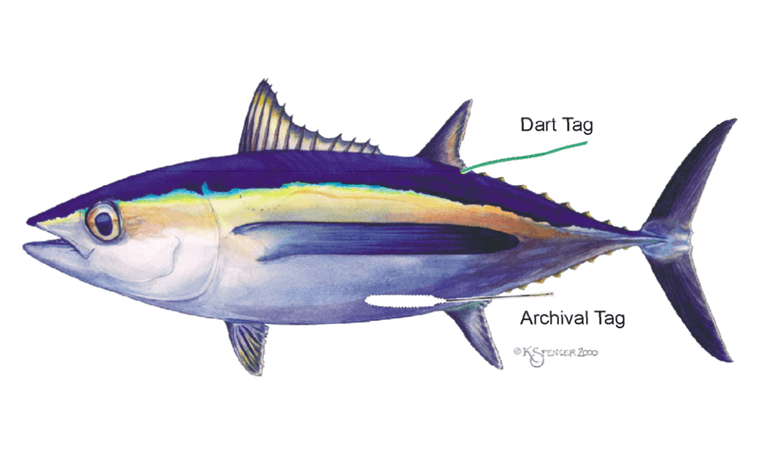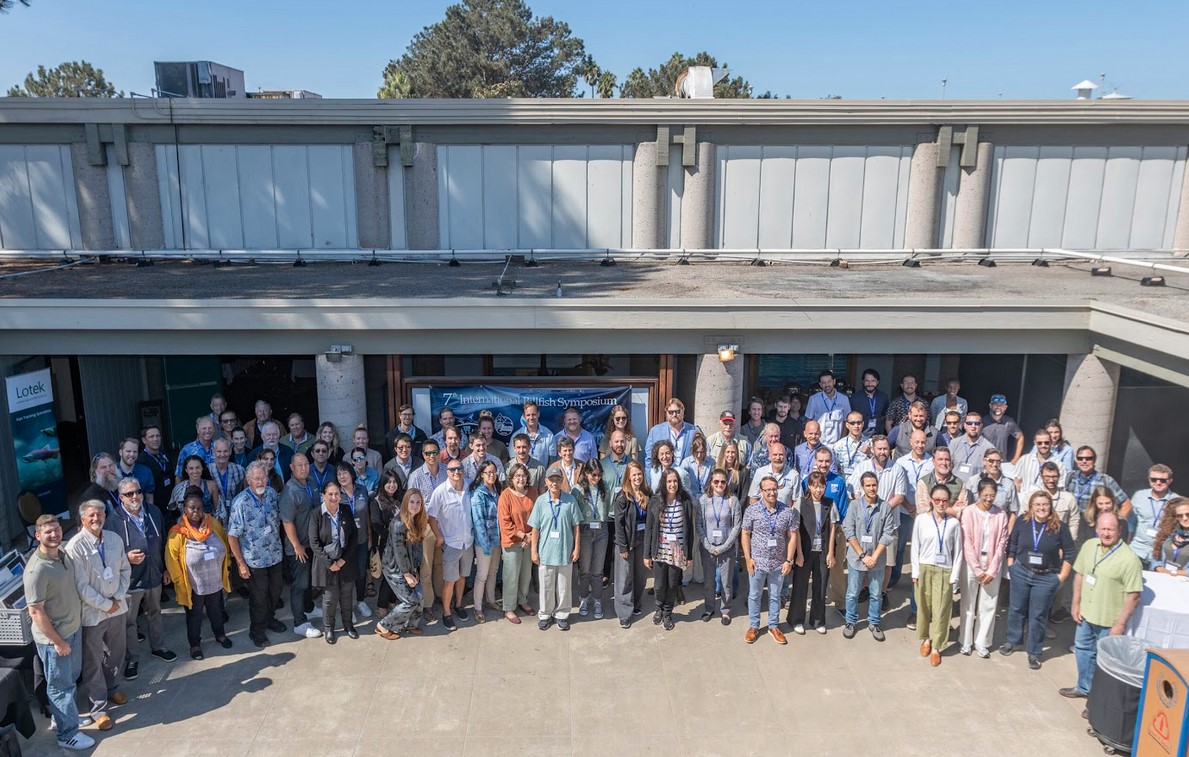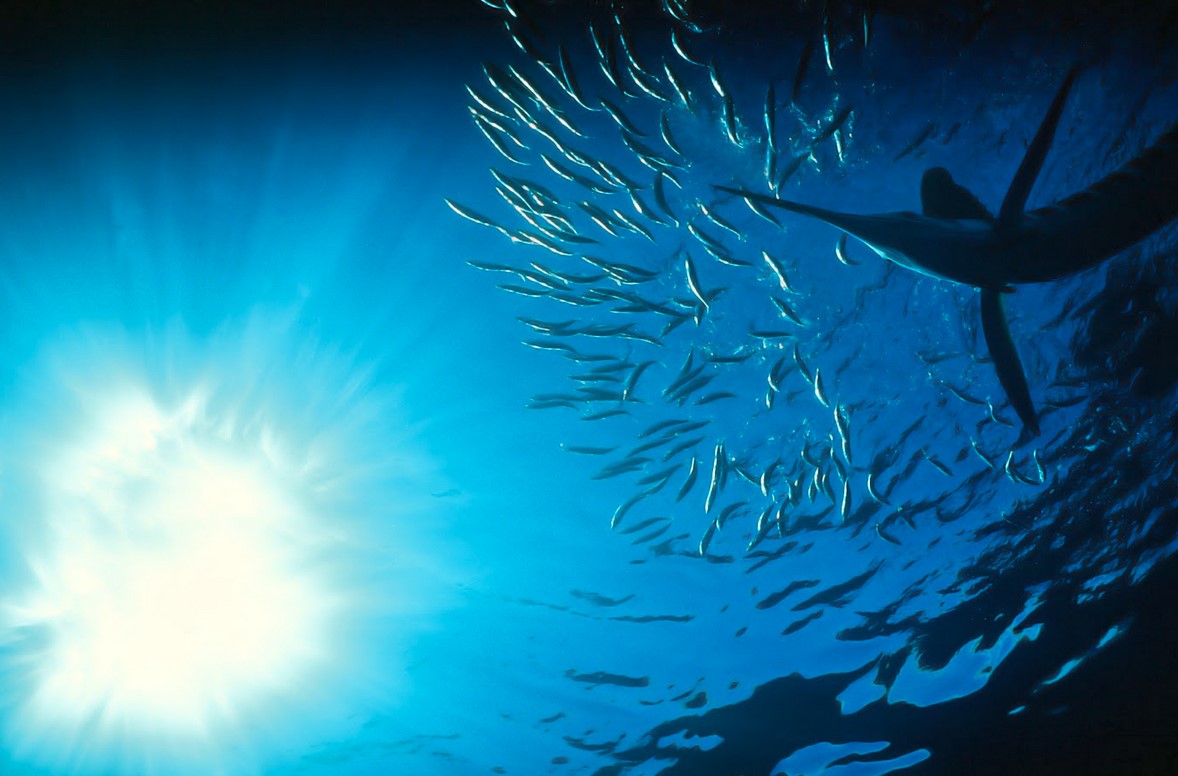by Theresa Labriola
Anglers can help NOAA’s Southwest Fisheries Science Center (SWFSC or Center) with their research of Pacific Bluefin Tuna and Pacific Albacore. Here’s how.
In recent years, Pacific bluefin tuna bigger than 150 pounds have schooled off of California. This year, it looks like history may repeat itself, and scientists are asking anglers for help to collect gonads (reproductive parts), stomachs, and otoliths from bluefin, big and small, caught off the California coast.
 Scientists are examining these big bluefin to see if they are mature and determine if they are spawning in the eastern Pacific. As far as we know, Pacific bluefin tuna only spawn in two regions in the western Pacific, near Japan. After hatching, a portion of the young bluefin migrate to the eastern Pacific Ocean to forage and grow. These bluefin usually return to the western Pacific Ocean as they approach sexual maturity at around 3-6 years old or 4-6 feet in length.
Scientists are examining these big bluefin to see if they are mature and determine if they are spawning in the eastern Pacific. As far as we know, Pacific bluefin tuna only spawn in two regions in the western Pacific, near Japan. After hatching, a portion of the young bluefin migrate to the eastern Pacific Ocean to forage and grow. These bluefin usually return to the western Pacific Ocean as they approach sexual maturity at around 3-6 years old or 4-6 feet in length.
However, in recent years, fish that are potentially old enough to be mature have remained in the eastern Pacific for longer than usual, prompting new research and questions. While gonads collected so far have not exhibited developed ovaries or any evidence of spawning, the Center needs more samples to be conclusive.
If you would like to share your bluefin tuna carcasses of any size, please keep samples on ice to preserve freshness and contact the Center as soon as possible to arrange for timely pickup. Any and all samples you provide will improve the quality of science. To participate, contact Owyn Snodgrass at the NOAA SWFSC in La Jolla, CA at owyn.snodgrass@noaa.gov.
 If you head out on a trip targeting Pacific albacore tuna, keep an eye out for electronic, archival tags. NMFS tagged and released albacore in the North Pacific Ocean. These tags enable more detailed investigations into albacore behavior and habitat use, and can track individual fish vertically and horizontally throughout their range to help better understand their movement and migration along the Pacific Coast.
If you head out on a trip targeting Pacific albacore tuna, keep an eye out for electronic, archival tags. NMFS tagged and released albacore in the North Pacific Ocean. These tags enable more detailed investigations into albacore behavior and habitat use, and can track individual fish vertically and horizontally throughout their range to help better understand their movement and migration along the Pacific Coast.
Tagged fish can be identified by the presence of a green dart tag in the back of the fish near the second dorsal fin and a plastic coated stalk protruding from the rear portion of the belly. A reward of $500 will be paid for the return of a tagged fish with the archival tag in place along with the date, latitude and longitude of where the tagged fish was caught and the gear used to catch the fish.
The reward can be obtained by returning the tagged fish and capture information to NMFS SWFSC in La Jolla, CA by contacting john.childers@noaa.gov.
Become a member of Wild Oceans today and support our work to protect our ocean treasures and the future of fishing.





